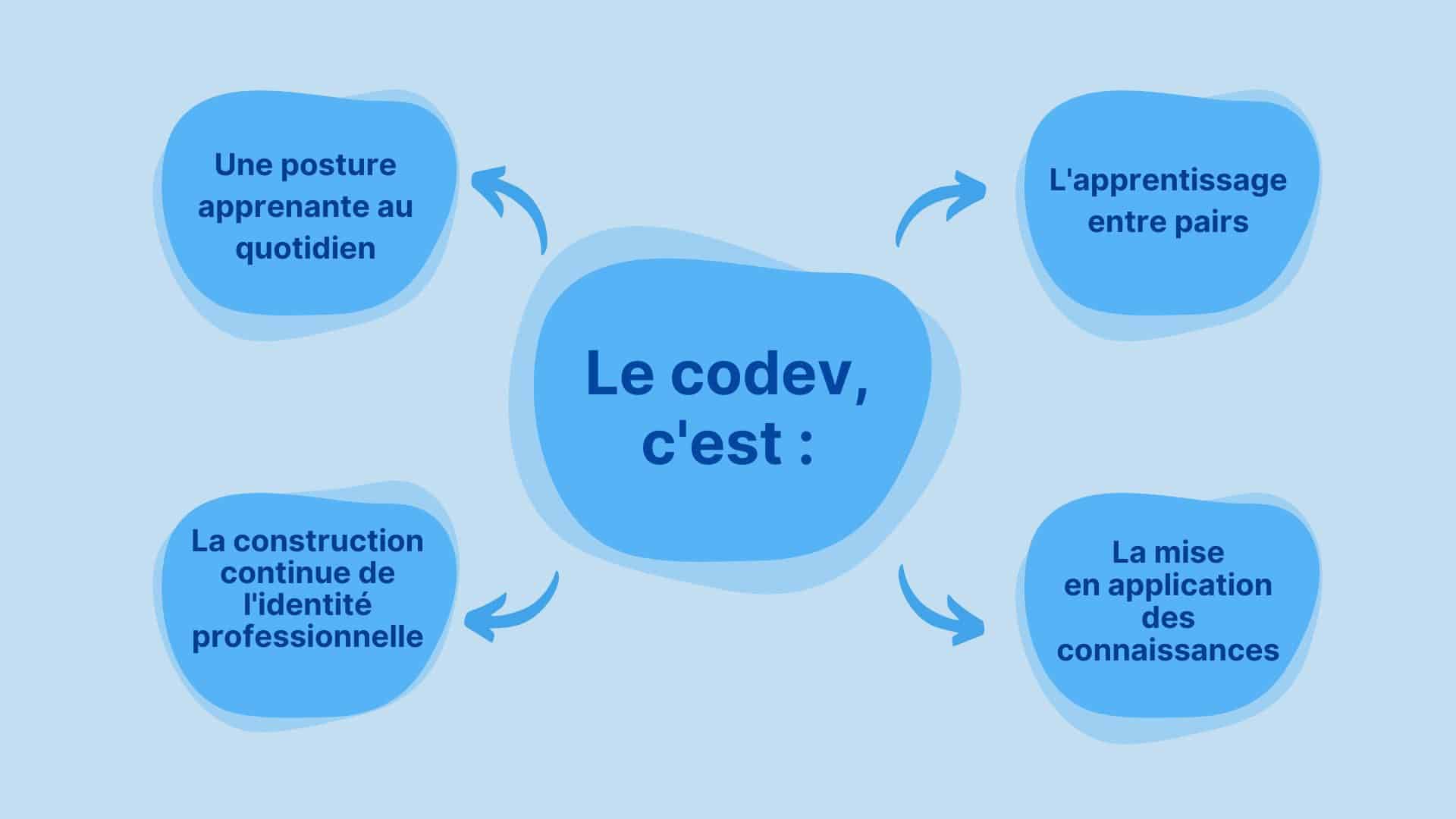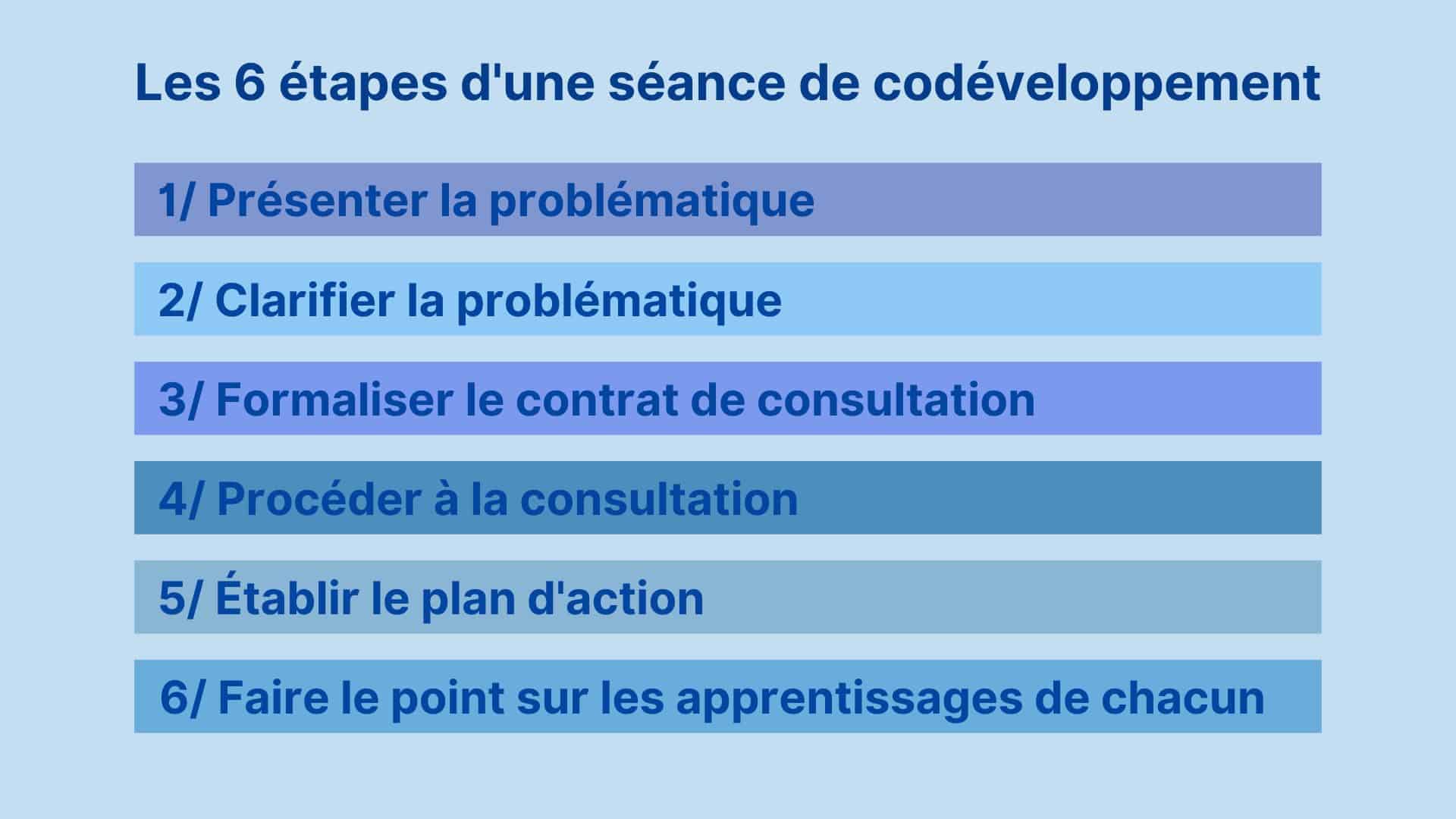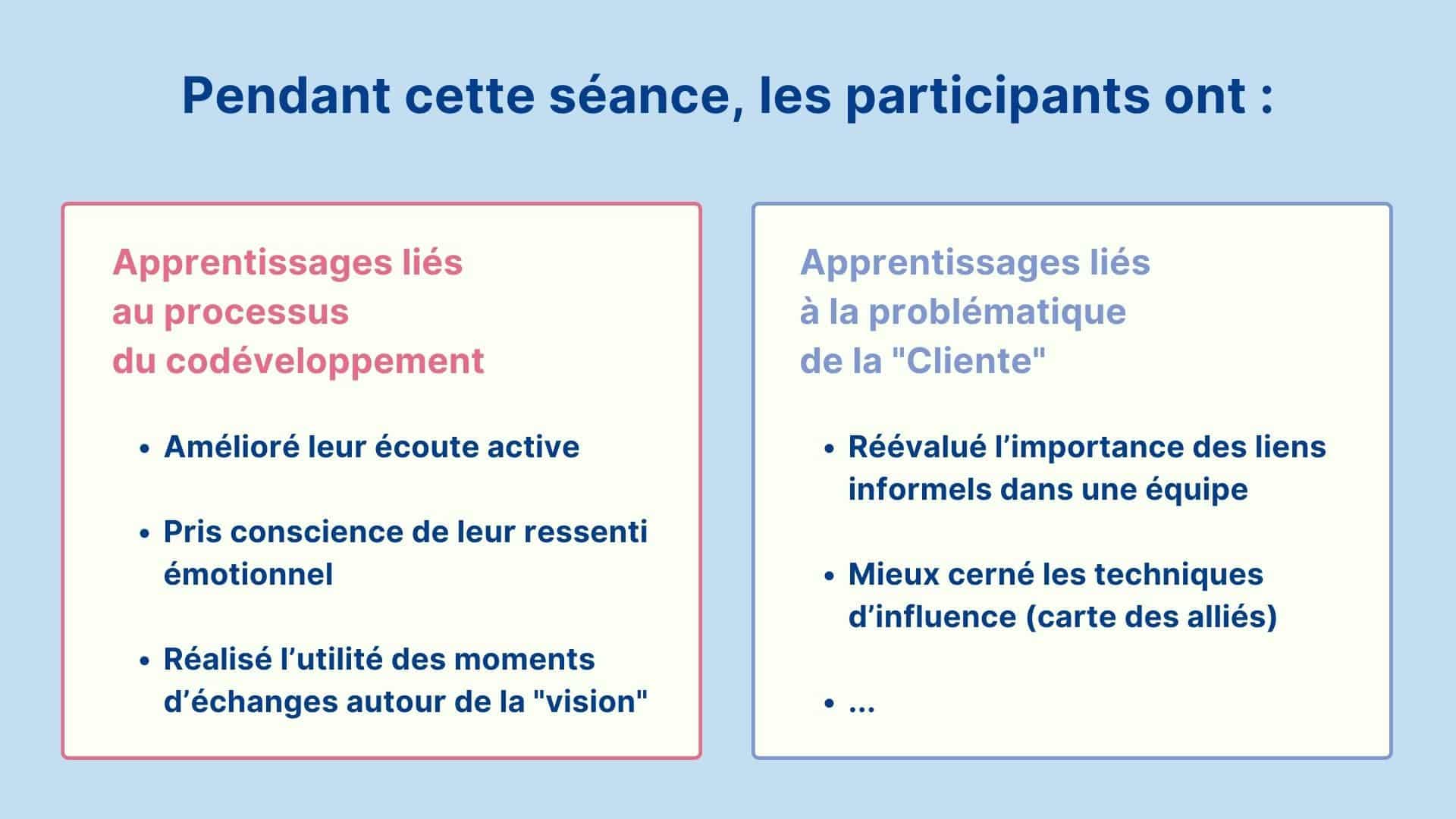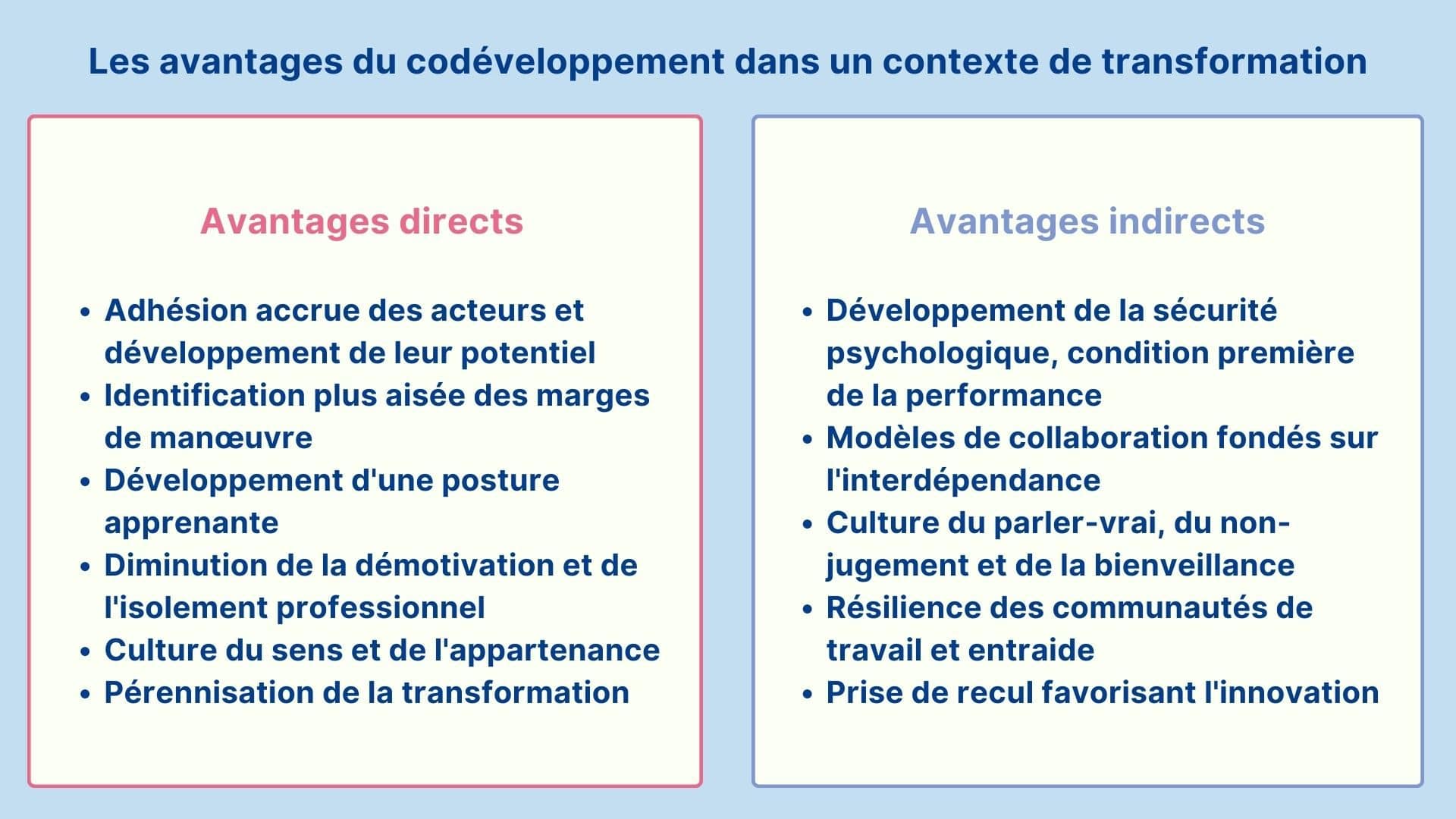As a training-action technique, co-development is an invaluable ally in a context of transformation. Faced with growing complexity, companies are seeing their business models turned upside down. This has an impact on both professional and personal development. leadership managers. It's becoming essential to be able to take a step back and adopt a stance of continuous improvement in one's professional practice! This is precisely one of the benefits of co-development. Fabiola Ortiz, coach and facilitator of co-development groups, takes a closer look.

Co-development, sometimes called "codev", is highly topical in a VUCA (Volatile, Uncertain, Complex, Ambiguous) world where management models are being turned upside down. In effect, the leader is no longer a know-it-all pointing the way, but rather a facilitator enabling the potential of each individual to blossom. The development of professional identity and the expression of full potential are therefore at the heart of the challenges facing the management function.
Complementary to traditional approaches to ongoing training, co-development is an appropriate response for managers and companies seeking to improve their performance in a context of transformation. Why is this? Because it tackles a critical aspect, namely the ability of individuals to develop their own attitudes and to play an active role in change. How does it do this? By using an experiential approach that requires stakeholders to take an active part.
What does co-development involve?
Co-development is based on the cycle: Action, Reflection, Collective Intelligence, Action. The starting point for learning is therefore the professional practice of the participants. There is no pre-established theoretical content. What's more, co-development advocates taking a step back and continuously improving professional practices. By questioning know-how and interpersonal skills, it encourages the development of a holistic vision of professional identity.
The fundamental principles of co-development

Co-development: practical aspects
Co-development involves a peer group that meets regularly in a learning process with a facilitator who guarantees the method and the posture of the group.
The group consists of eight people at most. It can be set up on an inter- or intra-company basis. It defines its own meeting procedures. Generally, it meets once a month for two to three hours.
In principle, there are as many sessions as there are members in the group. A session consists of six phases, the duration of which is determined by the group.

The objectives of a co-development session
During each session, one of the participants becomes the "Customer". This person is at the centre of the process. He or she submits to the group a current professional issue on which he or she would like to draw on the collective intelligence to broaden his or her thinking before taking action.
The other members of the group then play the role Consultants". Their mission? To help the Customer think things through with the help of their questions and contributions.
Both the questions asked and the avenues suggested help the Customer to develop a new perspective that will enable them to take action. The methodology is based on taking a step back, being sympathetic and empowering the Customer.
What subjects does co-development cover?
Co-development enables group members to address their current challenges: a project, a concern or an issue.
Some examples :
- A member of my team is strongly opposed to the company's development. I'm worried about his ability to demobilise the team. What are my management levers?
- As project manager, I'm in an uncomfortable position when it comes to a subject that is highly political and essential to the success of the project. What are my levers of influence?
- Despite my years of experience and proven expertise, I lack confidence. I often feel like an impostor. This affects my professional positioning and my ability to contribute to projects. What can you do to overcome impostor syndrome?
A continuous improvement approach
Discussing issues in a confidential and secure group setting enables members to overcome their limits and adopt a continuous improvement approach that is invaluable to the transformation process.
Why meet for the long term?
On the one hand, because building trust is fundamental to the group's effectiveness and impact. To borrow a metaphor from Claude Champagne and Adrien Payette, the creators of the method: like a jazz band at a jam session, the co-development group looks for itself and gradually gains in depth. In other words, it becomes capable of identifying problems with greater relevance and developing innovative solutions.
Secondly, because the length of the workshop means that each participant has the opportunity to put forward a problem for the group to consider. In this way, everyone comes to learn on an equal footing and in a spirit of collective intelligence.
Step-by-step co-development: case study
In this case study, I'm the facilitator for a group set up by an industrial company undergoing restructuring. The issue? Supporting managers in managing change so as to make the transformation sustainable.
Together, we choose the person who will be the "Client" at the next session, scheduled for a month from now. This gives them time to think about their subject and prepare their presentation: it's a first step in taking a step back and objectifying the problem.
A month later, the group is ready to work on the proposed subject.
1re phase: presenting the issues - 10 minutes
The Client presents her problem to the Consultants. She was faced with the merger of two audit departments. She sensed a historical rivalry between the two teams, which had different approaches to the business. As the future head of the team, she wanted to bring the merger to a successful conclusion. She therefore addresses both the objective aspects, linked to the facts, and the subjective aspects, linked to her feelings.
His questions
- How can this merger be successfully completed?
- How do you embody a managerial stance based on fairness between the two teams?
- How to ease existing tensions?
- How do you create cohesion and collaboration to form a single team?
Consultants take notes. They try to develop their listening and curiosity skills.
2e phase: clarifying the issues - 40 minutes
This is the time for exploration. Consultants need to understand the complexity of the situation and the Customer's issues in the situation (objective and subjective dimensions). They therefore ask clarifying questions, using open-ended questions, to identify the real issues and sticking points. At the same time, they hone their own skills: active listeningcuriosity, non-judgement, cognitive resistance to hasty solutions.
For example:
- What risks do you anticipate?
- What leverage do you have before and after the merger?
- What is the vision of the two teams?
- What is your current position in relation to these two teams?
These questions of clarification invite the client to broaden her thinking by considering angles that she had not previously considered.
3e phase: formalising the consultation contract - 10 minutes
At this stage, the group has a clearer understanding of the problem. The customer has continued to gain perspective. It's time to formalise a consulting contract that sets out the scope of the Consultants' contributions. The Customer therefore formulates a clear and structuring request as to what she expects from them in the next phase.
Of all the co-development phases, this is the only one where consensus is sought: is the question relevant to the problem? Does it address the customer's real sticking point? Can each of the Consultants contribute to the question being asked?
Initially, the customer asked: "How can I motivate teams to work together? This formulation was too restrictive, and would limit the contributions of the co-development group to solutions that affect team motivation.
Consensus was reached on a broader formulation that allowed different approaches to be explored. "What levers do you see, before and after the merger of the teams, to create a common culture in line with the transformation and the development of team cohesion? This is the question that will define the scope of the Consultants' work during the 4-day workshop.e phase.
4e phase: consultation - 30 minutes
The Consultants take it in turns to contribute their views, ideas and experience in relation to the question posed. To do this, they draw on their different areas of knowledge and experience. "Divergence" is the key word at this stage of co-development. Their aim is not to solve the problem or identify the ideal solution. They should enable the customer to continue her reflection.
This is why the customer does not actively participate in this phase. She is invited to adopt a posture of welcome, reflection and listening. She takes a step back from her own models and can then identify new options or become aware of the levers available for building her team.
5e phase: action plan - 10 minutes
The customer tells the group what she has learned and what actions she plans to take.
- Draw up a map of allies. Get closer to informal team leaders to understand their point of view and turn them into allies when integrating teams.
- Organise a team launch event where the pitfalls and different approaches can be discussed.
- Identify a working structure based on pairs that can encourage the construction of a new shared vision.
This phase is informative. In other words, the intentions communicated are not discussed with the group. This phase enables the customer to formalise her commitment to action. This will then enable her to take action in an intentional and informed way.
6e phase: review what everyone has learned - 20 minutes
The final stage is devoted to group self-regulation. Discussions focus on what each participant has learned. The learning stems as much from the co-development process itself as from the ideas contributed on the Customer's "case".
Learning during a co-development session

[Note] At the start of the next session, the participant told us that her initial actions had been encouraging. By approaching members of each of the teams, she was able to identify common points on which she could capitalise: informal links between members of the two teams, organisational culture, building a common vision. The co-development session enabled her to ask the right questions and establish an action strategy.
Direct and indirect benefits of co-development
In a context of transformation, co-development offers a number of advantages direct benefits. In particular, it allows the creation of learning groups focused on implementing change. The result: greater buy-in from stakeholders, easier identification of room for manoeuvre, and the development of a sense of belonging to ensure that the transformation lasts.
It also brings perquisites linked to soft skillssuch as the development of a culture of truth-telling resilience communities, as well as the perspective needed to solve problems in innovative ways.

In conclusion, co-development enables participants to reposition themselves as agents of change. Peer groups can be set up around the thorniest issues of transformation: anchoring cultural change, learning to manage resistance, adapting one's managerial style, etc. Co-development is therefore an invaluable lever in a context of transformation!


